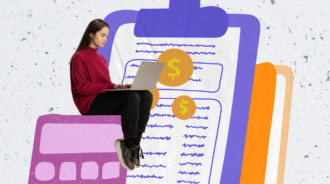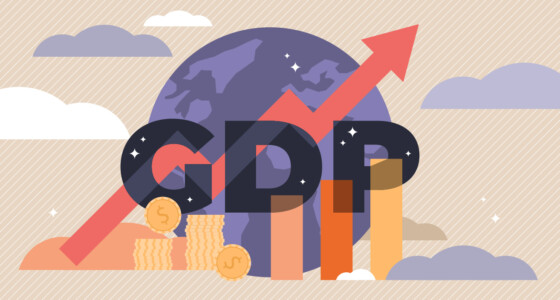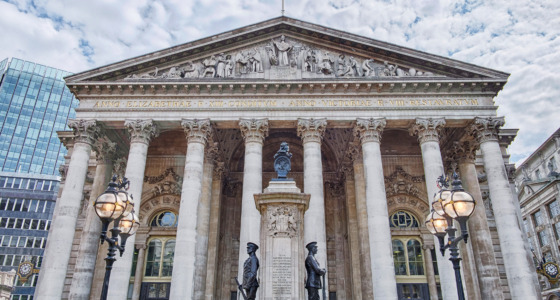

Anyone who wants to invest should understand what the meaning of a bond is and how bonds work because they are crucial for the diversification of an investment portfolio. In this article, we will tell you what basic characteristics and features bonds have, as well as the risks. Read on, and you will know how to invest in bonds and receive returns.
What is the meaning of a bond in finance?
Let’s start with what bonds are. The definition of bonds in many areas (economics, the stock market, finance, banking) boils down to this: a debt issued by an entity (like a company, municipality, or government) and sold to investors to fund its projects. Because a bond is a debt, it may default if the issuer cannot repay it.
Types of bonds
Bonds differ in terms of their issuer and how risky they are. There are four types of bonds:
Corporate bonds
This type of bond is issued by companies. It is a better choice for them than taking out a loan from a bank. What is the main difference between a bank loan and a bond? The interest rate on bonds is usually lower than on loans.
Note! Corporate is the riskiest type of bond.
Municipal bonds
These bonds are issued by municipalities and states. Some of the municipal bonds offer tax-free coupon income.
Government (sovereign) bonds
These bonds can be issued, for example, by U.S. Treasury. They exist in several types. First, bonds lasting a year or less are called “Bills”. Second, bonds lasting from 1 to ten years are called “notes”. Third, bonds lasting from 10 to 30 years or more are called “bonds”. The entire category of bonds issued by the government treasury is collectively referred to as “treasury bonds”. Bonds of national governments may be referred to as sovereign debt. In addition, governments may offer small-denomination savings bonds and inflation-protected bonds.
Note! Government bonds are considered the safest among the widely known types of bonds.
Agency bonds
They are bonds issued by government-related entities such as Freddie Mac.
Note! There are also secured and unsecured bonds. The first is a type of debt investment that is backed by a specific asset, i.e., the property acts as collateral. Unsecured bonds, also called surety bonds, are not backed by equipment, income, etc. Instead, the issuer promises that they will be redeemed.
Basic characteristics of bonds
When buying a bond, you must understand the features of bonds and these concepts:
- A bond issuer is a corporate, agency, or government borrowing funds from an investor. These issuers determine the risks the investors will face. These entities will repay the borrowed amount in fixed coupons over regular periods. Also, there are rating agencies to give credit ratings to these issuers depending on some factors; one issuer can have more than one credit rating.
- Maturity date: It is the date upon which the issuer will have repaid the whole amount of funds borrowed.
- A coupon is the fixed amount the borrower pays the investor regularly until the maturity date.
- Face value: The whole amount of funds investors get from the issuer upon maturity date. It’s also known as the principal amount.
- Bond yield is the returns the investor will get when investing in the bond.

Risks of bonds
Bonds are debts, and you can’t ensure they’ll be paid back. In addition, there are six risks of bonds:
- Interest rate risk. It happens when a bond with the same price as the current bond but with a higher interest rate shows up in the market, compelling the investors to invest in it instead. That forces the price of the first bond to go down to match the interest rate of the other new bond (the relationship between interest rates and bond prices is an inverse one). To avoid this risk, there’s the modified duration test that tells how likely is the bond price to change when the interest rate fluctuates.
- Default/credit risk. It happens when the issuer might not be able to pay back the agreed-upon amount due to financial instability. This type of risk happens with corporates where the coupon rates are higher than the government. That is why government bonds are much safer than corporate bonds. Bondholders are strongly advised to see the investment grade ratings given by the rating agencies like Moody and Poor.
- Inflation risks. The coupon will remain fixed when market prices go up. However, you’ll only be able to buy fewer goods with the same fixed coupon.
- Call risk and reinvestment. Corporations and municipalities sometimes withdraw their bonds due to falling interest rates, making them buy new bonds. Therefore, bondholders will have to reinvest their funds somewhere else. If you are investing in a callable bond, be sure to inquire about the time it’s likely to call to avoid this risk.
- Liquidity risk. Trading bonds is not something common in the market. There aren’t many buyers in the market, so that might result in the prices being more volatile, which might cause the bondholder not to get much in return, a low price.
- Market risk. If a bond is scarce or popular, its price will rise, which means the interest rates will go down, hurtful to bondholders.
Bond ratings
Bonds are rated by well-known agencies like Standard & Poor’s Ratings Services or Moody’s Investors Services. The highest rating the agency can give is AAA, and the lowest is C or D. Bonds with a high rating are considered safe as there’s less chance the bond will default. Those with a lower rating are considered risky, as there’s a big chance the bond will default. This type of bond is called “junk bonds” or “high yield”.
The government has a high rating by issuing bonds with lower interest rates, so they are considered safe. At the same time, companies have low credit ratings because there’s a significant risk of not paying back the interest rate or the principal amount of funds.
Bond dividend yields
Bond yield is what the investor gets in interest when buying a bond. The price of a bond might change when the interest rate changes. If the price goes up at a premium, the interest rate goes down, which means the yield goes down. If the price goes down at a discount, the interest rate goes up, which means the yield goes up.
To calculate the bond yield, you need to divide the fixed coupon rate the issuer pays annually by the face value/bond price.
Yield=Fixed coupon/Bond price
Let’s say you purchased a bond for 5000$, and you get paid 200$ on an annual basis:
Yield=Fixed coupon/Bond price=200/5000=4%.
However, bond prices are volatile. Let’s say the price of the bond rose to 5500$. The fixed coupon will still be fixed, so when calculating the yield, it’ll go down:
Yield=Fixed coupon/ Bond price=200/5500=3.64%
On the other hand, when the price of the bond goes down to 4300$, the coupon will also be fixed, and the yield will rise:
Yield=Fixed coupon/Bond price=200/4300=4.65%
General
We hope that the article has explained everything you need to know before investing in bonds and answered the questions of what is a bond and how does it work? When the share market is unstable, bonds can help balance your investment. The importance of bonds for diversifying an investment portfolio is undeniable. However, you must be aware of the risks and consider the financial stability of the issuer, several buyers in the market, and whether the issuer will withdraw the bond.






